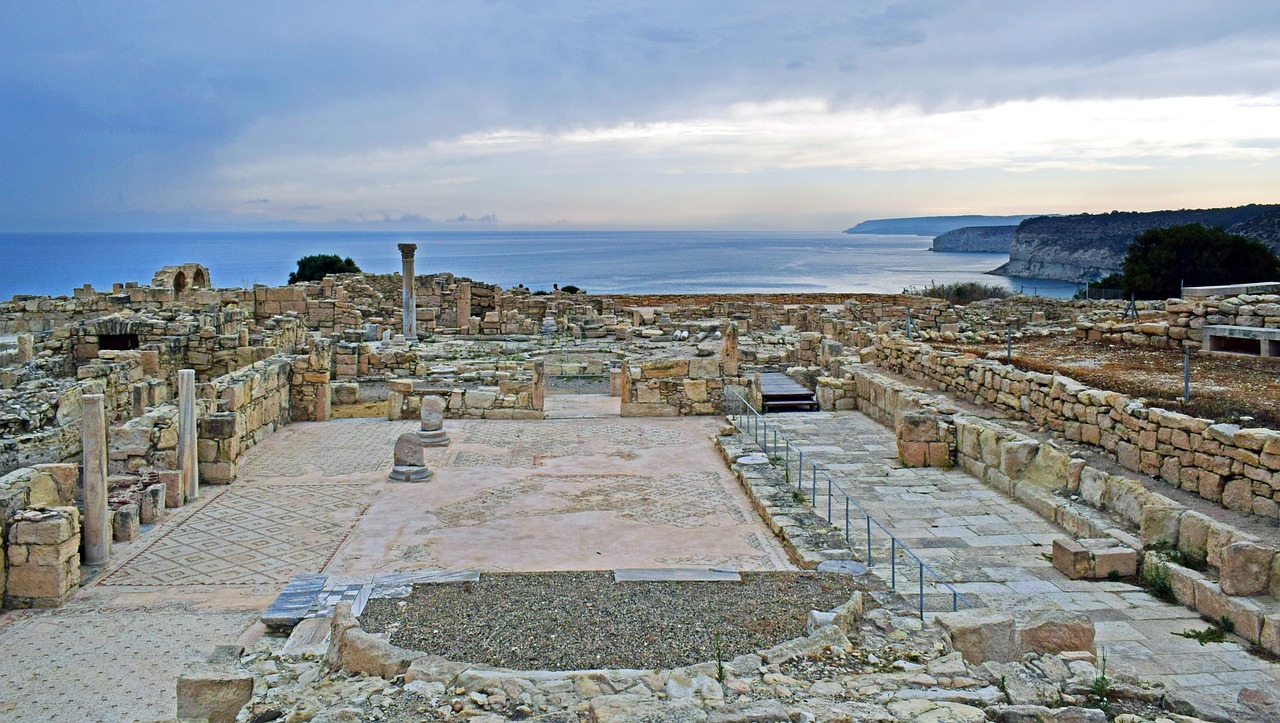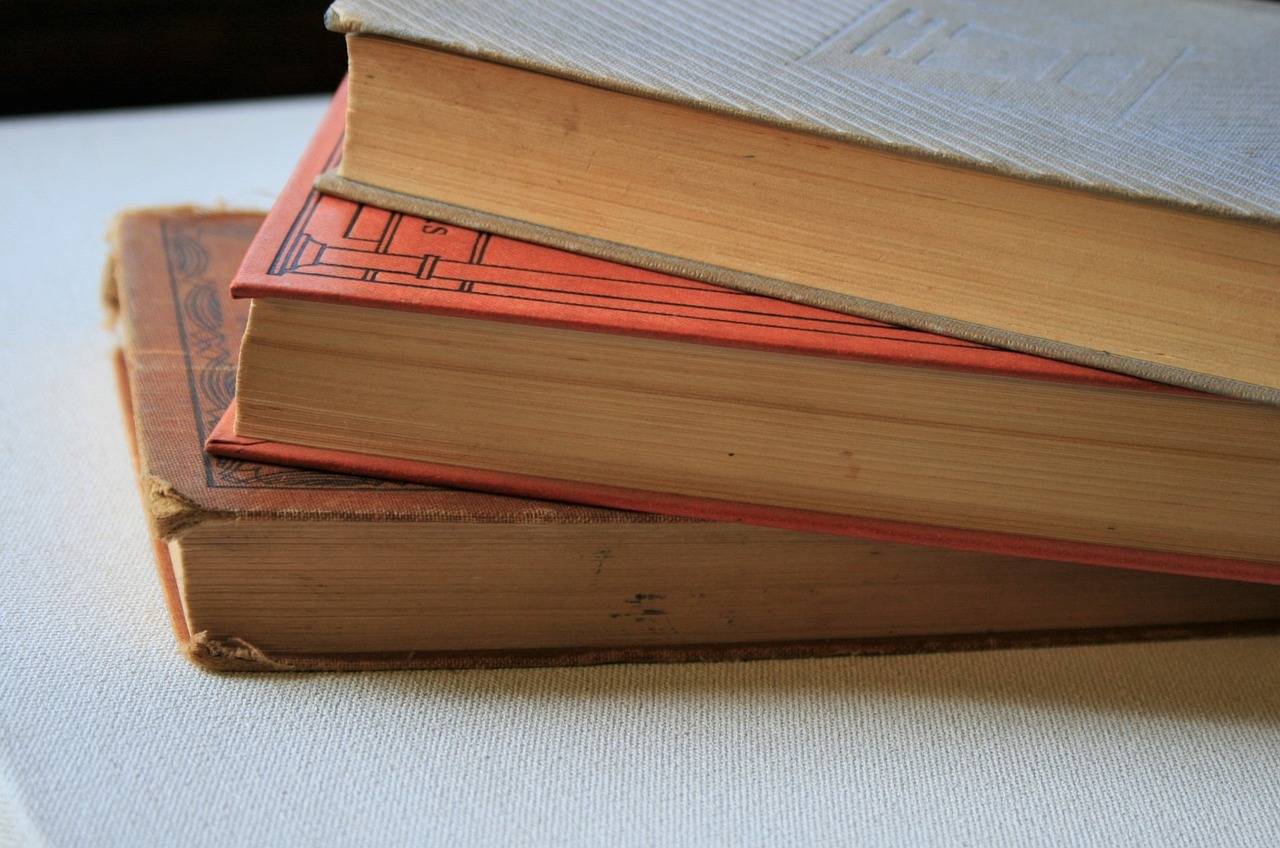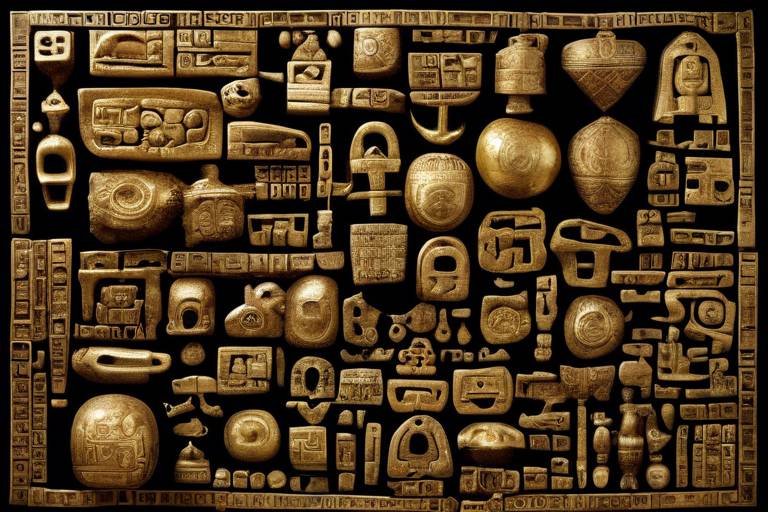The Secrets of the Lost Libraries of Ancient Civilizations
Imagine stepping into a world where knowledge is not just power but a treasure beyond measure. The ancient libraries of civilizations like Alexandria, Nineveh, and Timbuktu hold the keys to unlocking mysteries that have fascinated scholars and historians for centuries. These repositories of wisdom were not just buildings filled with scrolls and manuscripts; they were the beating hearts of intellectual exchange and innovation.
Among these legendary libraries, the Great Library of Alexandria stands out as a beacon of scholarship in the ancient world. Founded in the 3rd century BC, it housed a vast collection of texts from across the known world, attracting scholars and thinkers eager to expand their minds. The fate of this illustrious institution remains shrouded in mystery, with theories ranging from accidental fires to deliberate destruction.
In Mesopotamia, the ancient library of Nineveh held a trove of cuneiform tablets inscribed with the history and literature of the Assyrian Empire. These clay tablets were like windows into a bygone era, preserving the knowledge and culture of a civilization long gone. The discovery of Nineveh's archives provided invaluable insights into the ancient world and the people who inhabited it.
The Mayan codices, on the other hand, offer a glimpse into the intricate knowledge of the Mayan civilization. These rare manuscripts, filled with hieroglyphic writings and astronomical observations, reveal a sophisticated understanding of the cosmos. Deciphering the secrets hidden within these codices has been a monumental task, requiring dedication and expertise.
Traveling to Timbuktu in Mali, one encounters a treasure trove of manuscripts that speak to the intellectual legacy of West Africa. Covering a wide range of subjects from science and medicine to poetry and theology, these texts showcase the diversity and richness of African scholarship. The preservation of these manuscripts is not just a testament to the past but a bridge to the future.
The Library of Pergamum in Asia Minor was a rival to Alexandria, known for its collection of parchment scrolls that rivalled the Great Library in scope and significance. This ancient institution played a crucial role in the dissemination of knowledge throughout the Hellenistic world, shaping the intellectual landscape of the time.
Turning to Egypt, the Coptic Library housed Christian texts and scriptures that were instrumental in the early dissemination of Christianity. These manuscripts provide insights into the religious and cultural heritage of Egypt, shedding light on the beliefs and practices of early Christians in the region.
The eruption of Mount Vesuvius in 79 AD buried the Herculaneum scrolls, preserving them in a time capsule of carbonized papyri. These scrolls contain philosophical works and ancient texts that offer a window into the intellectual pursuits of the past. Deciphering these fragile documents is a delicate process that requires patience and expertise.
Lastly, the Dunhuang Caves Library in China reveals a crossroads of cultures and ideas along the Silk Road. Filled with Buddhist manuscripts and artworks, this hidden treasure trove illuminates the cultural exchange between East and West, highlighting the interconnectedness of civilizations through trade and knowledge.

Alexandria Library
The Alexandria Library, often referred to as the Great Library of Alexandria, stands as a symbol of ancient knowledge and scholarship that captivates historians and scholars to this day. Founded in the 3rd century BCE, this magnificent institution in Egypt was renowned as a hub of intellectual discourse, housing a vast collection of manuscripts, scrolls, and texts from various civilizations.
Imagine wandering through the grand halls of the Alexandria Library, surrounded by shelves filled with scrolls containing the wisdom of the ancient world. Scholars from far and wide would flock to this beacon of learning, exchanging ideas and pushing the boundaries of knowledge in fields ranging from philosophy and science to literature and mathematics.
However, the fate of the Great Library remains shrouded in mystery and speculation. One of the most enduring theories suggests that the library was tragically destroyed, either by a fire or through a series of conflicts, leading to the loss of countless invaluable works. The burning of the Alexandria Library has become a poignant symbol of the impermanence of human achievement and the fragility of knowledge.
Despite its eventual demise, the legacy of the Alexandria Library endures through the works of ancient scholars and the echoes of their intellectual pursuits. The spirit of inquiry and discovery that once thrived within its walls continues to inspire generations of thinkers, reminding us of the profound impact that a repository of knowledge can have on the course of history.

Nineveh Archives
Exploring the mysteries and knowledge hidden within the ancient libraries of civilizations like Alexandria, Nineveh, and Timbuktu, shedding light on their significance and the secrets they may still hold today.
The ancient library of Nineveh in Mesopotamia holds a wealth of historical and literary treasures, consisting of thousands of cuneiform tablets. These tablets are not mere artifacts but windows into the past, offering valuable insights into the culture and knowledge of the Assyrian Empire. The Nineveh Archives played a crucial role in preserving the wisdom of the ancient world, safeguarding texts on subjects ranging from law and medicine to astronomy and mythology.

Mayan Codices
The Mayan codices are a fascinating collection of rare manuscripts that provide insights into the ancient Mayan civilization's rich culture and advanced knowledge. These codices, written in hieroglyphic script, contain a wealth of information on various subjects, including astronomy, mathematics, rituals, and historical events. Despite the challenges of deciphering these intricate texts, scholars have made significant progress in unraveling the mysteries encoded within the Mayan codices.
One of the most famous Mayan codices is the Dresden Codex, a sophisticated astronomical manuscript that showcases the Mayan's advanced understanding of celestial phenomena. Through detailed illustrations and complex calculations, the Dresden Codex reveals the Mayan's intricate calendar system and their observations of celestial bodies, such as the movements of the sun, moon, and planets.
Another notable Mayan codex is the Madrid Codex, which focuses on various aspects of Mayan life, including religious ceremonies, agricultural practices, and divination rituals. This codex provides valuable insights into the spiritual beliefs and daily activities of the ancient Mayan people, shedding light on their complex society and cultural traditions.
Efforts to decipher the Mayan codices have been ongoing for centuries, with researchers using a combination of linguistic analysis, comparative studies, and scientific techniques to unlock the secrets contained within these ancient texts. By piecing together the fragmented glyphs and symbols, scholars have been able to reconstruct significant portions of the Mayan codices, expanding our understanding of this enigmatic civilization.

Timbuktu Manuscripts
Exploring the mysteries and knowledge hidden within the ancient libraries of civilizations like Alexandria, Nineveh, and Timbuktu, shedding light on their significance and the secrets they may still hold today.
The Timbuktu Manuscripts are a remarkable collection of ancient texts that provide a glimpse into the intellectual richness of West Africa. These manuscripts, dating back to the 13th century, cover a wide range of subjects, including astronomy, mathematics, medicine, theology, and literature. They offer valuable insights into the cultural and scholarly achievements of the region, showcasing the diverse knowledge that was preserved and passed down through generations.
One of the most fascinating aspects of the Timbuktu Manuscripts is the sheer volume of texts that have been discovered, estimated to number in the hundreds of thousands. These manuscripts are written in various languages, including Arabic, Fulfulde, and Songhay, reflecting the multicultural and multilingual nature of Timbuktu as a center of learning and trade in medieval times.
The subjects covered in the Timbuktu Manuscripts range from scientific treatises and legal documents to epic poems and religious texts. This diversity highlights the breadth of knowledge that was cultivated in West Africa, challenging misconceptions about the intellectual history of the continent and showcasing the sophistication of indigenous African societies.
Efforts to preserve and digitize the Timbuktu Manuscripts have been ongoing, aiming to safeguard these invaluable cultural treasures for future generations and make them accessible to scholars and researchers around the world. The manuscripts continue to inspire curiosity and fascination, offering a window into a rich and vibrant intellectual tradition that has often been overlooked in mainstream historical narratives.

Pergamum Library
The ancient Library of Pergamum, located in Asia Minor, stood as a beacon of knowledge in the Hellenistic world. Renowned for its vast collection of parchment scrolls, it rivaled the famed Library of Alexandria in Egypt. The rivalry between these two great libraries fueled intellectual pursuits and the dissemination of knowledge across ancient civilizations. Scholars from far and wide flocked to Pergamum to study its rich collection, which encompassed a wide range of subjects including philosophy, science, literature, and medicine.
One of the notable features of the Pergamum Library was its innovative use of parchment scrolls as a writing medium, a practice that later influenced the development of the codex, the precursor to modern books. This shift from scrolls to codices marked a significant advancement in the organization and accessibility of written knowledge, revolutionizing the way information was stored and shared.
The legacy of the Pergamum Library extended beyond its physical collection, as it played a pivotal role in shaping the intellectual landscape of the ancient world. The library's contributions to scholarship and learning reverberated through the centuries, influencing subsequent generations of thinkers and laying the foundation for the preservation and transmission of knowledge.

Coptic Library
The Coptic Library of Egypt stands as a testament to the rich religious and cultural heritage of the region. This repository of Christian texts and scriptures played a pivotal role in the preservation and transmission of early Christian writings, safeguarding valuable knowledge for future generations. Within its walls, ancient manuscripts containing theological treatises, biblical texts, and liturgical works were meticulously preserved, offering insights into the development of Christian thought and practices.
One of the most notable aspects of the Coptic Library is its diverse collection, encompassing a wide range of subjects beyond religious texts. Alongside Christian scriptures, the library houses works on philosophy, history, medicine, and astronomy, reflecting the intellectual curiosity and scholarly pursuits of the ancient Coptic community. These manuscripts provide a comprehensive view of the cultural landscape of Egypt during the early Christian era, shedding light on the intersection of faith, learning, and everyday life.
The Coptic Library served as a hub of knowledge and learning, attracting scholars, theologians, and scribes who contributed to the preservation and dissemination of written works. Through the meticulous transcription and translation of texts, the library played a crucial role in the dissemination of knowledge across generations, fostering intellectual exchange and scholarly debates within the Christian community.
Despite facing challenges and periods of upheaval, the Coptic Library endured as a beacon of learning and enlightenment, safeguarding the treasures of the written word amidst shifting political and social landscapes. The enduring legacy of the library continues to inspire scholars and researchers to delve into its vast collection, unraveling the mysteries of the past and uncovering hidden gems of wisdom and insight.

Herculaneum Scrolls
The Herculaneum Scrolls, buried beneath the ashes of Mount Vesuvius's catastrophic eruption, offer a tantalizing glimpse into the philosophical and literary treasures of the ancient world. These carbonized papyri, discovered in the Villa of the Papyri in Herculaneum, present a unique challenge to scholars seeking to unlock their secrets.
The scrolls predominantly contain works of Epicureanism, a philosophical school founded by Epicurus that emphasized the pursuit of pleasure and the avoidance of pain as the highest good. In addition to philosophical treatises, the scrolls also encompass a diverse range of ancient texts, providing insights into the intellectual landscape of the Roman Empire.
Deciphering the Herculaneum Scrolls poses significant obstacles due to their fragile state and the complex process required to unfurl and read the tightly wound papyri. Scholars employ cutting-edge technologies such as multispectral imaging and advanced computational analysis to reconstruct and transcribe the damaged texts, piecing together fragments of ancient wisdom.
The exploration of the Herculaneum Scrolls not only sheds light on the philosophical currents of antiquity but also offers a window into the daily lives and intellectual pursuits of the ancient Romans. These preserved writings provide a direct connection to the past, allowing us to engage with the thoughts and ideas of individuals long gone, bridging the gap between ancient and modern civilizations.

Dunhuang Caves Library
The Dunhuang Caves Library, nestled within the Mogao Caves in Dunhuang, China, is a treasure trove of ancient manuscripts and artworks that offer a glimpse into the rich cultural exchange along the Silk Road. These caves, also known as the Thousand Buddha Grottoes, house a vast collection of Buddhist scriptures, paintings, and sculptures dating back over a thousand years.
Within the depths of the library cave, visitors can marvel at the intricate murals depicting scenes from Buddhist sutras and teachings, showcasing the artistic mastery of ancient craftsmen. The manuscripts found here not only shed light on the spiritual beliefs of the time but also provide valuable insights into the intellectual pursuits and scholarly endeavors of ancient civilizations.
One of the most remarkable aspects of the Dunhuang Caves Library is the diversity of languages and scripts found within its collection, reflecting the multicultural nature of the Silk Road. Alongside Buddhist texts written in Sanskrit and Chinese, visitors can discover manuscripts in languages like Tibetan, Uighur, and even Old Turkic, highlighting the interconnectedness of different cultures through trade and travel.
The library cave itself is a marvel of engineering, with its intricate system of shelves and niches carved into the rock walls to store the precious scrolls and manuscripts. The cool, dry climate of the caves has helped preserve these ancient documents, protecting them from the ravages of time and ensuring that future generations can continue to study and appreciate their historical significance.
Visiting the Dunhuang Caves Library is not just a journey through time but a testament to the enduring legacy of human creativity and intellectual curiosity. As scholars and archaeologists continue to uncover new treasures hidden within these ancient caves, the story of Dunhuang remains a testament to the power of knowledge to transcend borders and unite people across time and space.
Frequently Asked Questions
- What were the main purposes of ancient libraries?
Ancient libraries served as centers of knowledge, scholarship, and cultural exchange. They housed valuable manuscripts, scrolls, and texts on various subjects such as history, philosophy, science, and literature. Scholars and researchers visited these libraries to study, transcribe, and preserve important works, contributing to the advancement of learning and civilization.
- How were ancient manuscripts and texts preserved?
Ancient manuscripts and texts were preserved using different methods depending on the civilization and time period. Materials such as parchment, papyrus, and clay tablets were commonly used for writing. Libraries stored these documents in controlled environments to protect them from damage due to humidity, pests, and decay. Additionally, scribes made copies of important texts to ensure their preservation.
- What challenges are faced in deciphering ancient scripts and languages?
Deciphering ancient scripts and languages presents various challenges due to the lack of available translations and the evolution of writing systems over time. Scholars rely on comparative linguistics, context clues, and interdisciplinary studies to decode ancient texts. Additionally, damaged or fragmented manuscripts require extensive restoration and analysis to reconstruct the original content accurately.
- Why are ancient libraries considered significant in modern times?
Ancient libraries are considered significant in modern times due to the wealth of historical, cultural, and scientific knowledge they contain. The texts and manuscripts found in these libraries provide valuable insights into the beliefs, practices, and achievements of ancient civilizations. Studying these sources helps us understand the roots of contemporary ideas, technologies, and societal structures.



















